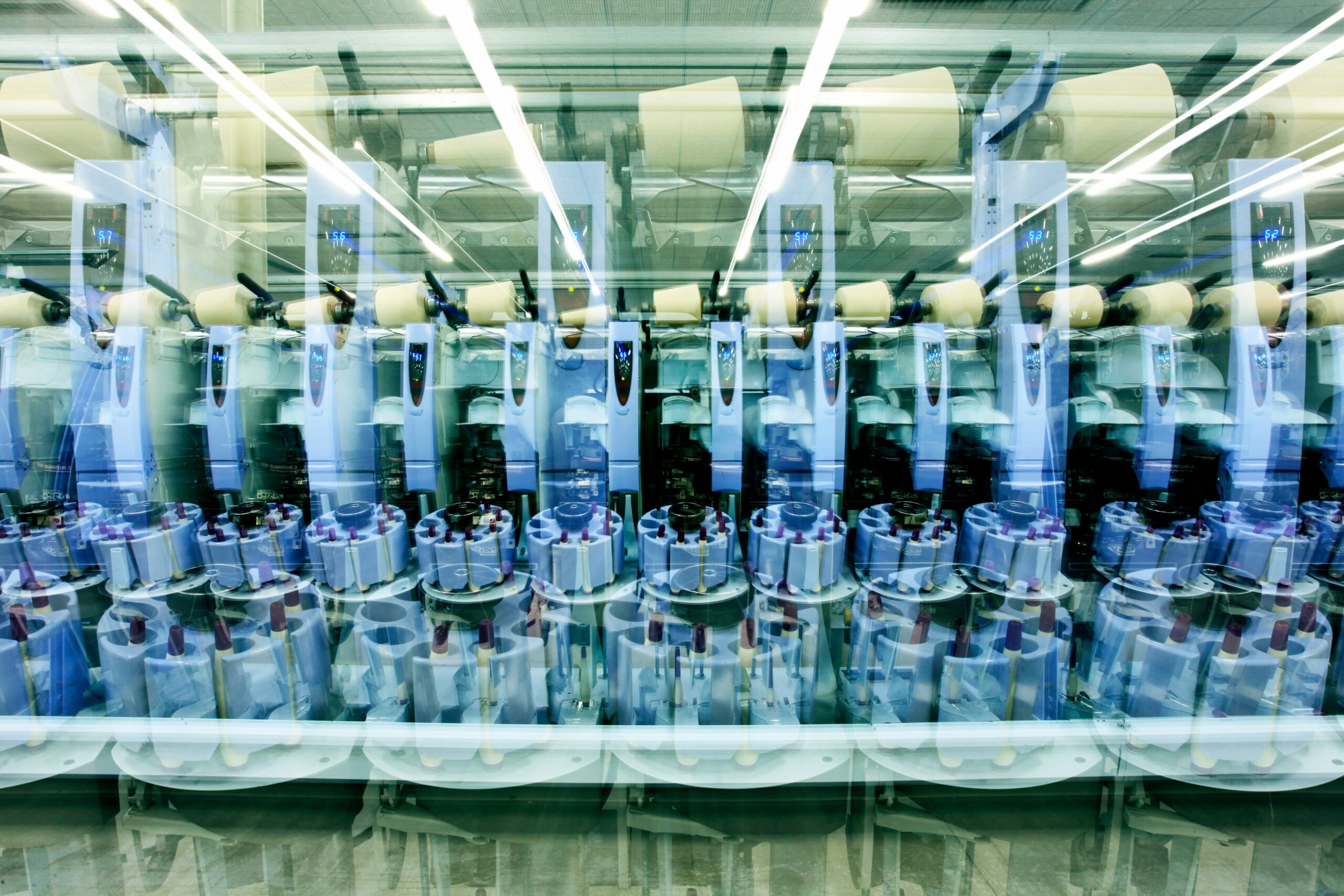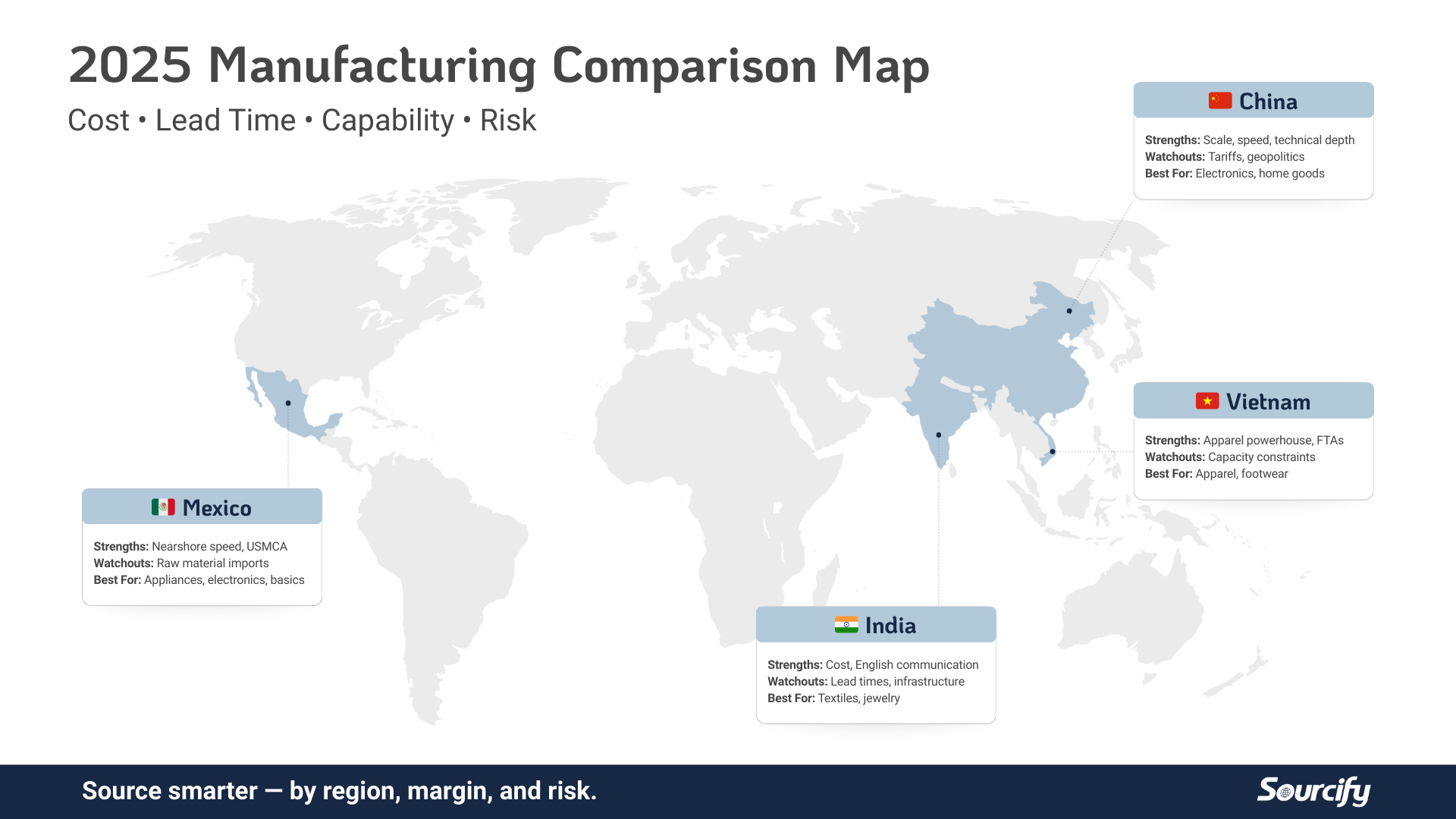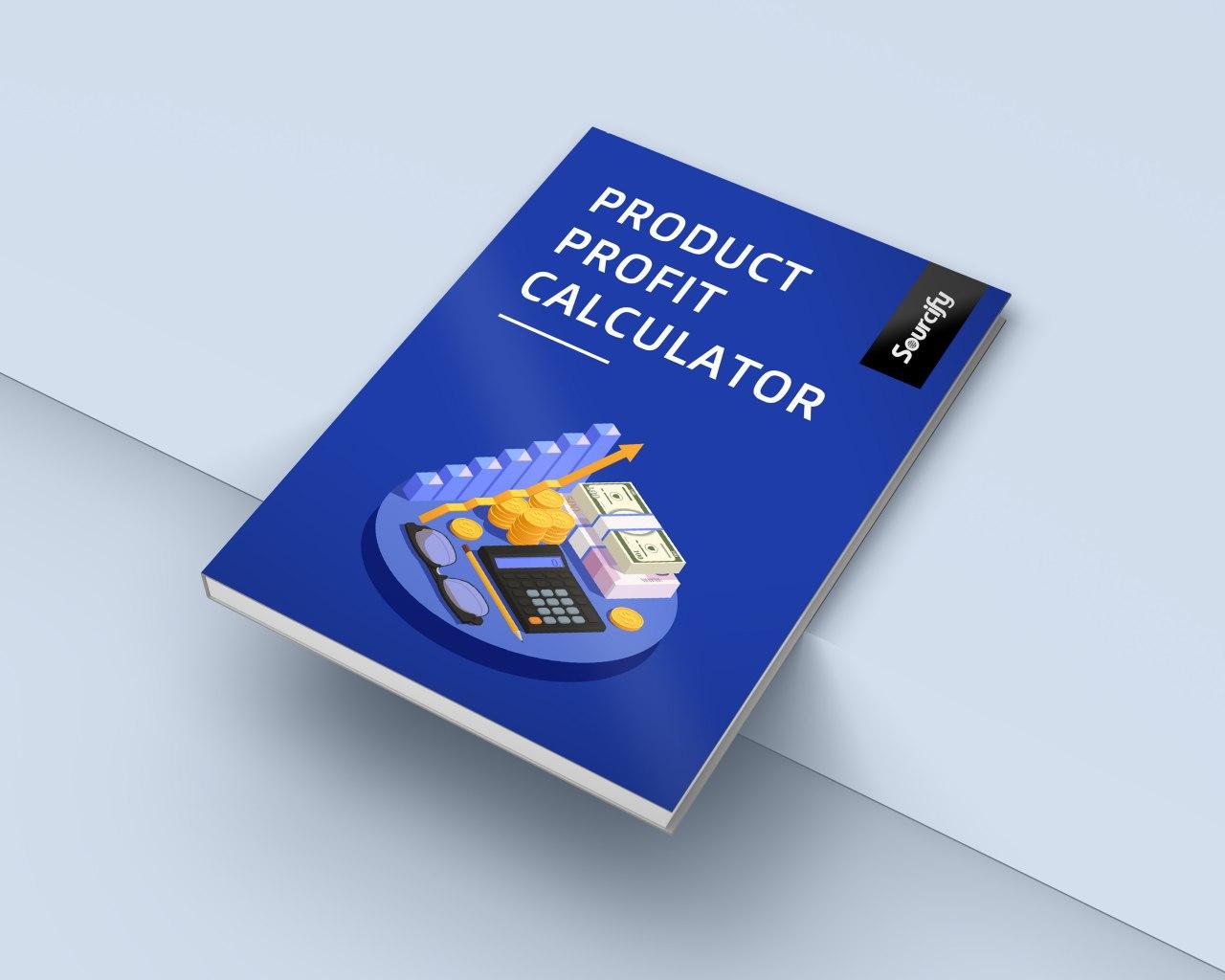In sourcing, trends move slower than headlines — but this one’s real. For years, “China Plus One” has been the go-to diversification play. In 2025, the most forward-thinking brands are taking it further: China Plus Three. Instead of shifting all their eggs to a single new basket, they’re building multi-region sourcing portfolios designed to weather the next decade — not just the next tariff.
The Evolution from “One” to “Three”
At first, “China Plus One” made perfect sense.
Pick a secondary production base — usually Vietnam, India, or Mexico — and you’d be hedged against supply shocks, tariffs, and capacity limits. But 2024 and 2025 exposed the flaw: one backup isn’t enough. Between port congestion, inflation, and shifting trade policies, even “diversified” supply chains found themselves vulnerable.
That’s why the smartest sourcing teams are expanding their playbook: diversifying within Asia and beyond Asia at the same time. This isn’t a reaction to fear — it’s a recognition of reality. Global manufacturing is fragmenting. The brands that thrive will be the ones who plan for it.
What “China Plus Three” Really Means
It’s not a buzzword. It’s a structure. A China Plus Three strategy spreads production across multiple regions, each serving a specific role in the portfolio.
Example structure:
- China: High-volume, precision, or component-heavy SKUs.
- Vietnam / India: Diversified mid-volume runs, textile or metal categories.
- Mexico: Nearshore production for speed and responsiveness.
- Backup (Indonesia, Thailand, or Eastern Europe): Redundancy for risk coverage.
Each geography plays a role in your risk, cost, and lead time equation. No single region is perfect — but together, they make your supply chain more resilient.
Why Smart Brands Are Expanding Their Map
1. Risk Isn’t Linear — It’s Layered.
Tariffs are just one form of exposure. Add currency shifts, labor strikes, political unrest, and port congestion, and “diversification” takes on new meaning. A multi-region network ensures no single point of failure can shut down production.
2. Cost Isn’t Everything (But It Still Matters).
Yes, China’s costs have risen — but so have many alternatives’. Brands using a China Plus Three model leverage competitive tension between suppliers to manage pricing while improving flexibility.
3. Speed Is the New Margin.
Nearshoring to Mexico or Central America won’t always beat Asia on cost, but it can reclaim weeks in lead time — and that’s cash flow you can feel.
4. Consumer Proximity Matters.
E-commerce brands, especially in apparel, are realizing that being closer to the customer allows for smaller runs, faster replenishment, and less overstock risk. That’s worth more than chasing the cheapest factory quote.
How to Structure a Multi-Region Sourcing Plan
Building a regional stack isn’t about spreading out randomly — it’s about balance and fit.
Here’s how leading brands are structuring it:
Step 1: Anchor Where You’re Strong.
Keep production in China for categories where infrastructure, quality, and component depth still outpace other markets.
Step 2: Add Complementary Regions.
Choose regions that offset China’s risks:
- Vietnam for apparel and soft goods.
- India for metals, leather, and furniture.
- Mexico for packaging, assembly, or high-turnover items.
Step 3: Build Redundancy, Not Chaos.
Having three suppliers across three countries doesn’t mean managing triple the complexity — if you centralize communication and quality control. That’s where a managed sourcing partner like Sourcify helps keep operations aligned.
Step 4: Pilot Before You Pivot.
Start with one or two SKUs. Prove out cost, quality, and lead time before shifting your entire production line. Good sourcing is gradual, not reactionary.
Operational Payoffs
When done right, multi-region sourcing doesn’t just protect you — it empowers you.
✅ Negotiation Leverage: With multiple active vendors, you can negotiate smarter — not harder.
✅ Flexibility: If one region faces delays, you can reallocate production without starting from scratch.
✅ Market Readiness: You can serve multiple customer bases faster, with localized fulfillment or assembly.
✅ Peace of Mind: You don’t wake up wondering if a single political event will derail your quarter.
What the Data Shows (and What We’re Seeing)
Across Sourcify’s network, we’ve seen a sharp increase in brands operating with at least two active geographies outside of China — often Mexico plus one in Asia.
2025’s most strategic moves include:
- U.S. and EU brands adding Vietnam + Mexico as a dual hedge.
- Consumer electronics brands testing India for final assembly.
- Lifestyle and apparel brands combining China + Vietnam + Mexico to balance volume and velocity.
It’s less about replacing China — and more about reducing dependence.
In short: less exposure, more options.
The Calm, Strategic Takeaway
Global sourcing used to be about efficiency. Now, it’s about resilience. “China Plus Three” isn’t about abandoning what works — it’s about designing a system that can adapt when things don’t. It’s not reactionary; it’s disciplined.
And it’s exactly how smart brands are positioning for the next decade of uncertainty. If your factory map still fits on one page, it might be time to redraw it.
Add Your Voice to the 2025 Sourcing Trends Report
We’re collecting real data on how sourcing strategies are evolving — and your experience matters.
👉 Take the 2-minute survey to share where your production is heading next and get early access to the 2025 Sourcing Trends insights.
Because the future of sourcing isn’t about leaving — it’s about leading.




